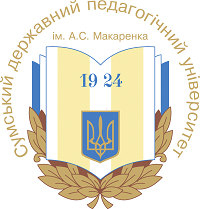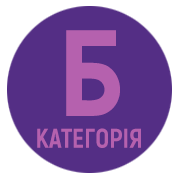A HOLISTIC APPROACH TO STUDENTS WITH SPECIAL EDUCATIONAL NEEDS IN THE CONTEXT OF WAR
DOI:
https://doi.org/10.32782/inclusion/2024.spec.2Keywords:
comprehensive approach, pedagogical staff, inclusive resource centers, individual educational trajectory, students, special educational needsAbstract
A Comprehensive Approach to Learners with Special Educational Needs is a systematic method of providing educational, psychological, social, and medical services aimed at creating favorable conditions for the learning, development, and socialization of such children. The goal of comprehensive support is to ensure the maximum realization of each learner's potential while considering their individual characteristics. The key components of this comprehensive approach include: Educational Component: Developing an Individual Development Program (IDP); Utilizing adapted or modified curricula; Applying special teaching methods, tools, and technologies. Psychological Component: Diagnosing the emotional state of the child; Providing counseling to the child, their parents, and teachers; Conducting psychological interventions to address stress, anxiety, or other emotional challenges. Social Component: Assisting with the child's socialization within a group; Engaging with parents to foster a supportive home environment; Facilitating the child’s integration into society through extracurricular activities. Medical Component: Monitoring the child’s health status; Offering recommendations on daily routines, nutrition, and physical activity; Providing specialized medical care as needed. Creation of an Inclusive Environment: Ensuring accessibility of the educational space (both physical and informational); Creating comfortable learning conditions tailored to the child's needs; Engaging teaching assistants or tutors for individual support when required. This approach is designed to provide holistic support, promoting the academic and personal growth of children with special educational needs and fostering their successful integration into society. A team of specialists usually includes teachers, speech therapists, psychologists, special education professionals, social workers, medical staff, and parents. Their collaborative efforts ensure that all aspects of a child's development and learning are taken into account. A comprehensive approach to learners with special educational needs during martial law is critically important, as it requires adaptation to current challenges. This approach should focus on meeting the individual needs of the child, providing support to overcome the effects of stress, and ensuring continuity of education even under difficult circumstances. A comprehensive approach is a key element of both special and inclusive education, as it guarantees equal opportunities for learners with special educational needs.
References
Боряк О. В. Центри реабілітації в Україні: реалії та перспективи. Inclusion and Diversity. Випуск 3, 2024. С. 10–14.
Конвенція про права осіб з інвалідністю, 2006. URL: https://zakon.rada.gov.ua/laws/show/995_g71#Text
Литовченко С. Навчально-реабілітаційний центр як сучасна форма організації освіти дітей із порушенням слуху. Особлива дитина: навчання і виховання. № 1, 2017. С. 78–85.
Миронова С. П. Педагогіка інклюзивної освіти: навчально-методичний посібник. Кам’янець-Подільський національний університет імені Івана Огієнка, 2016. 164 с.







